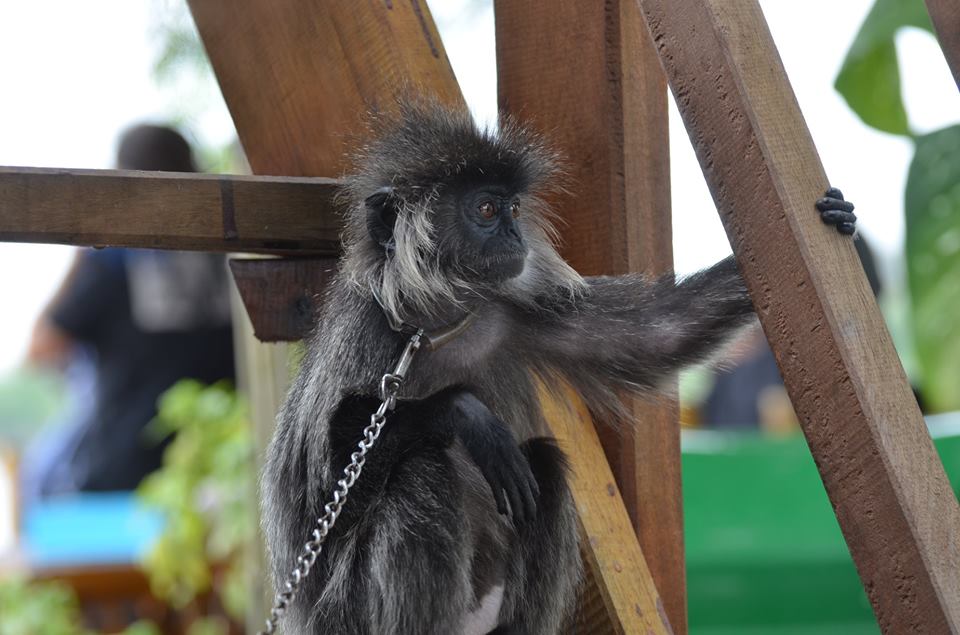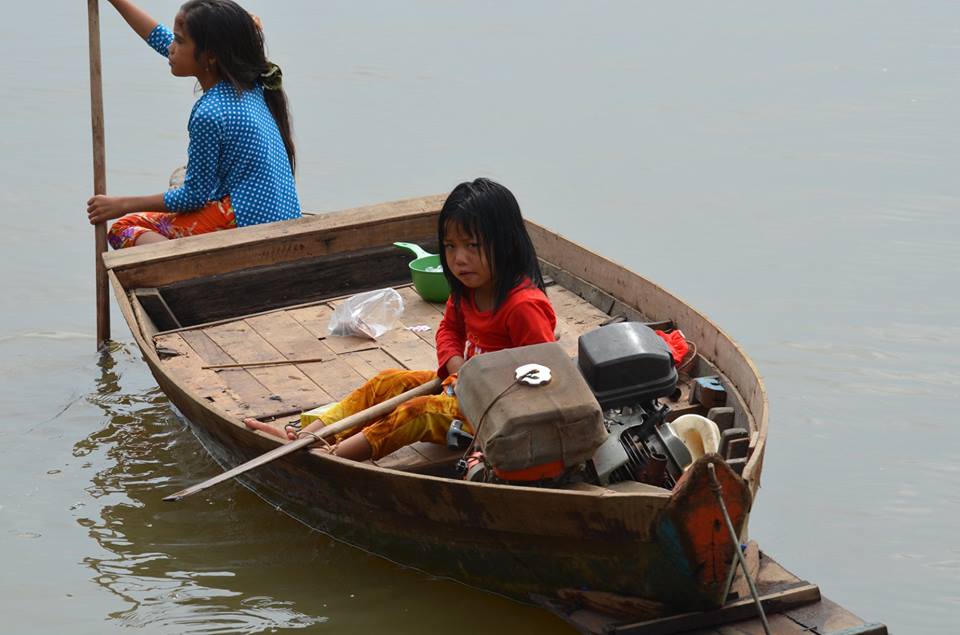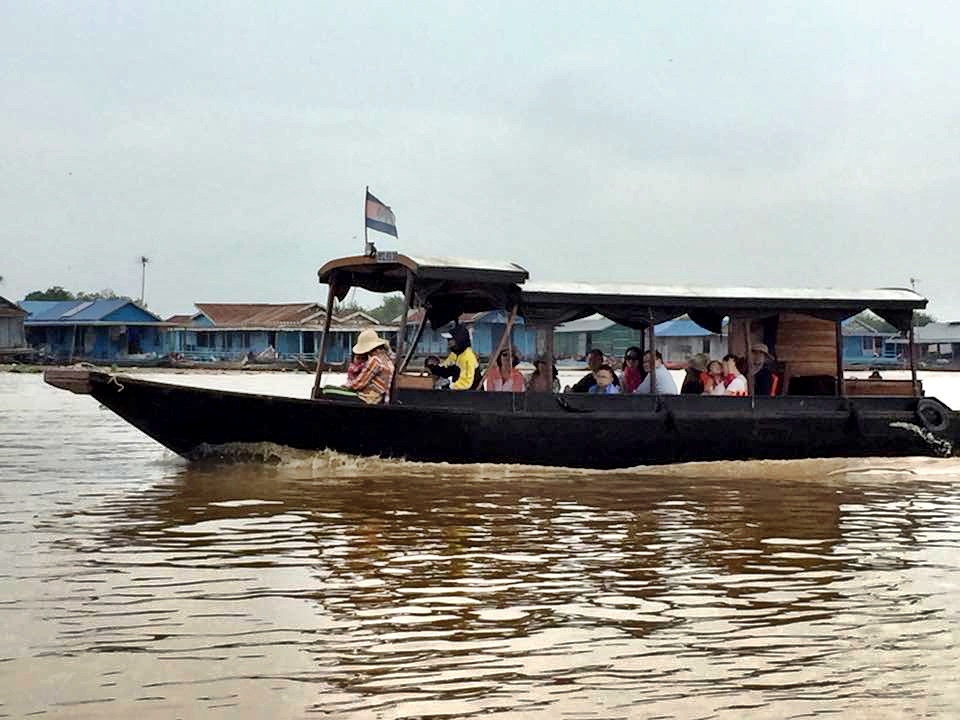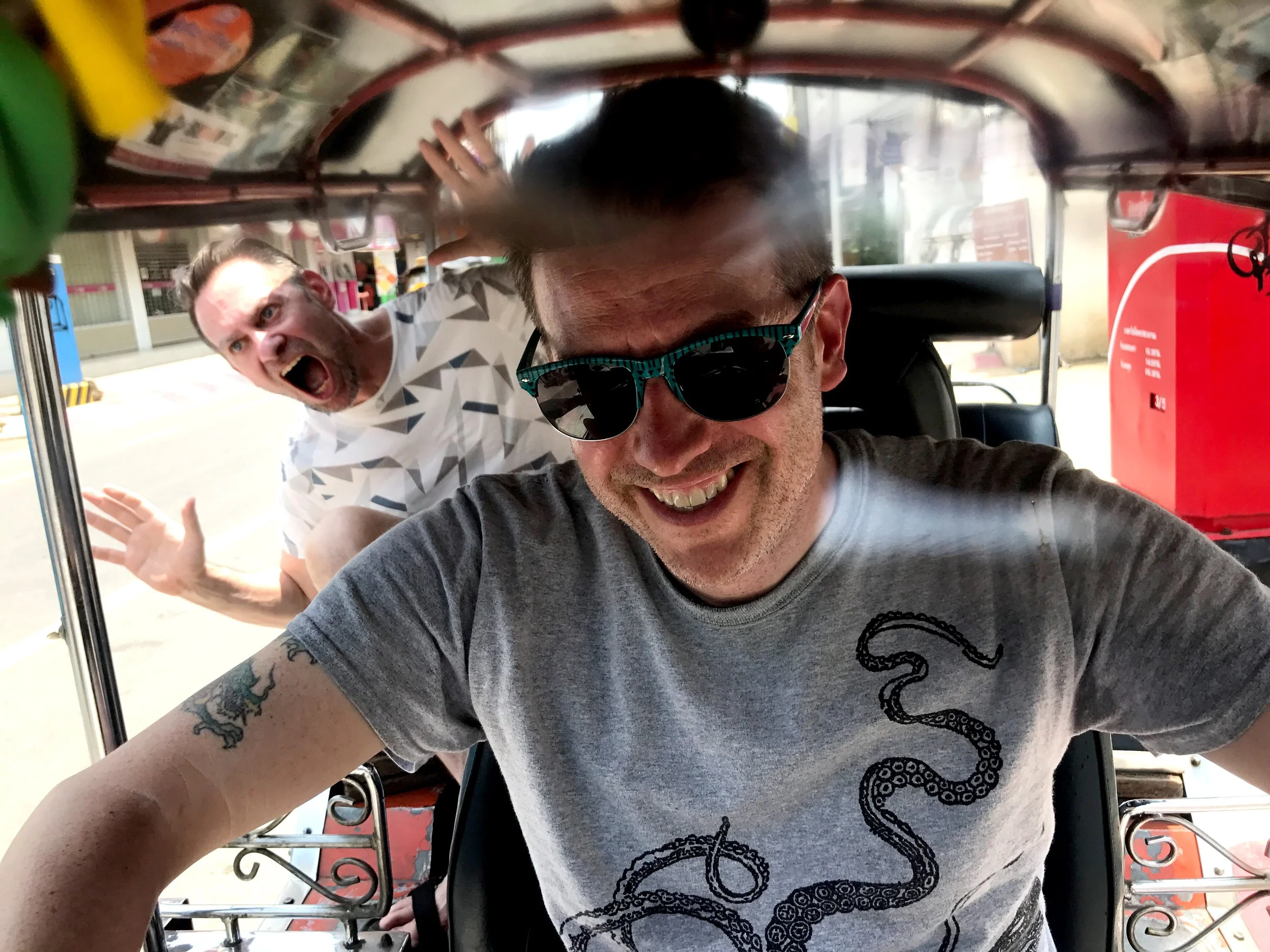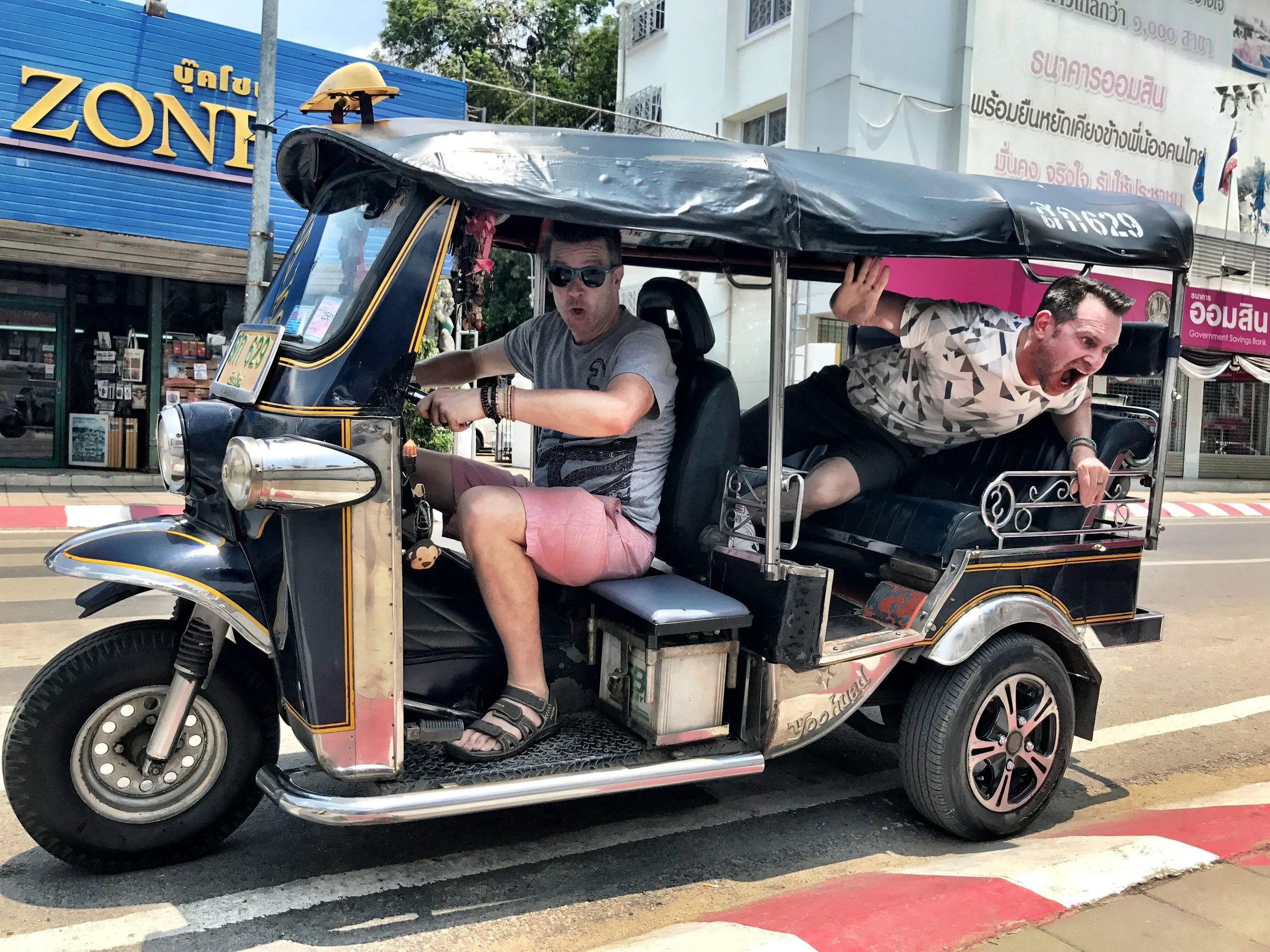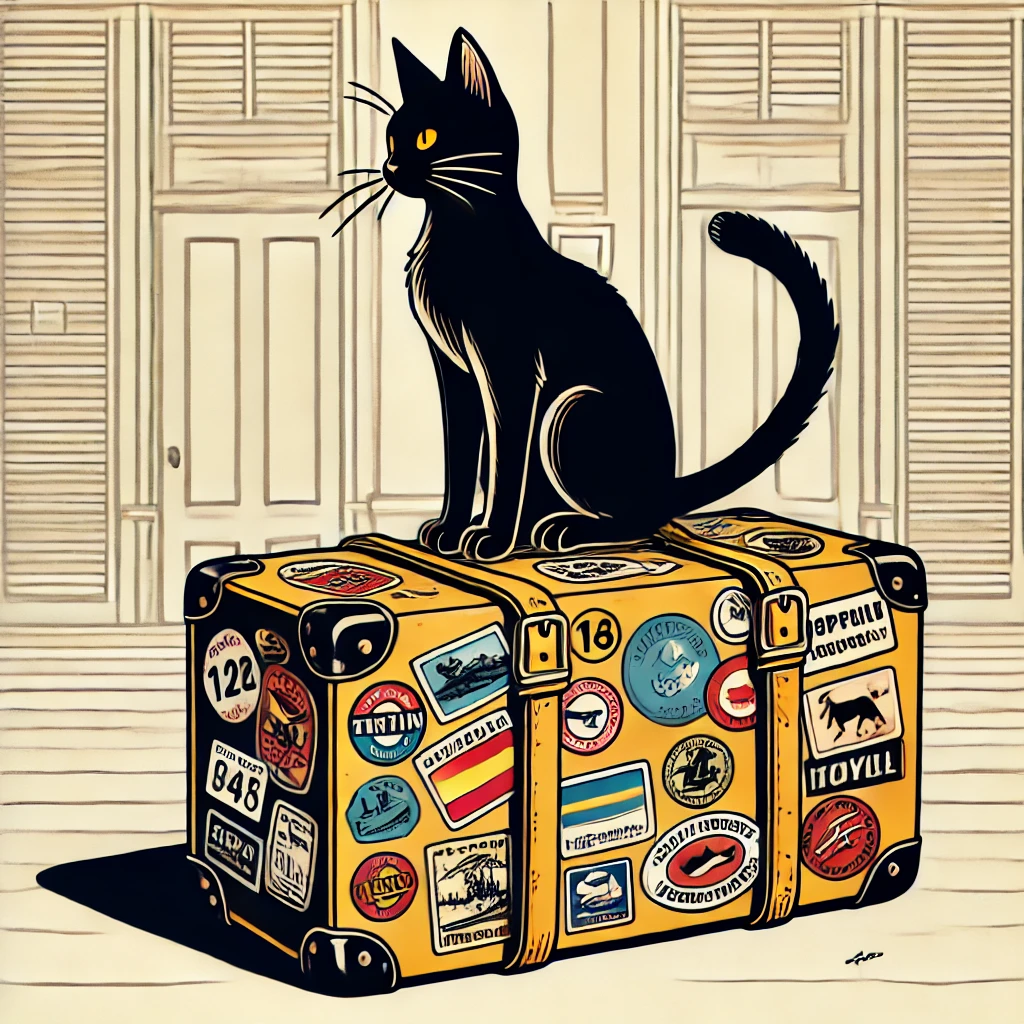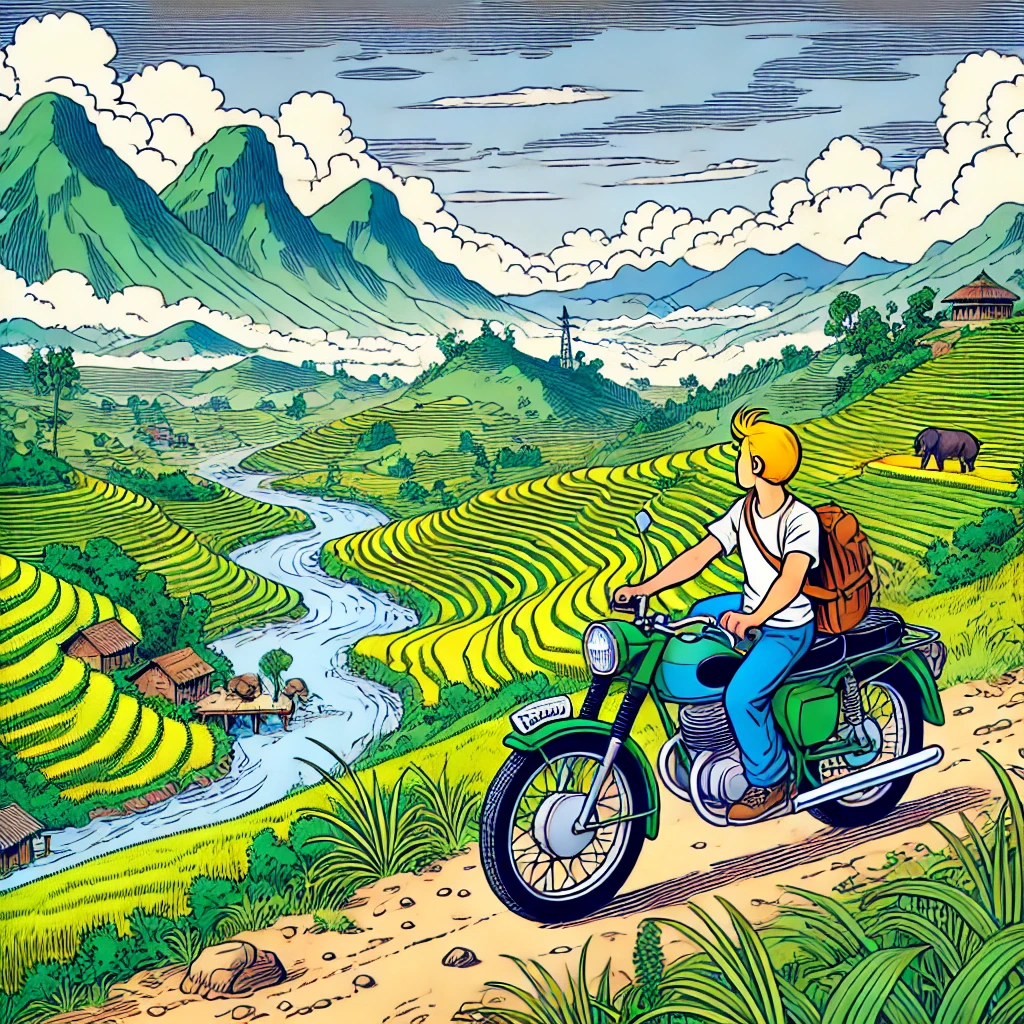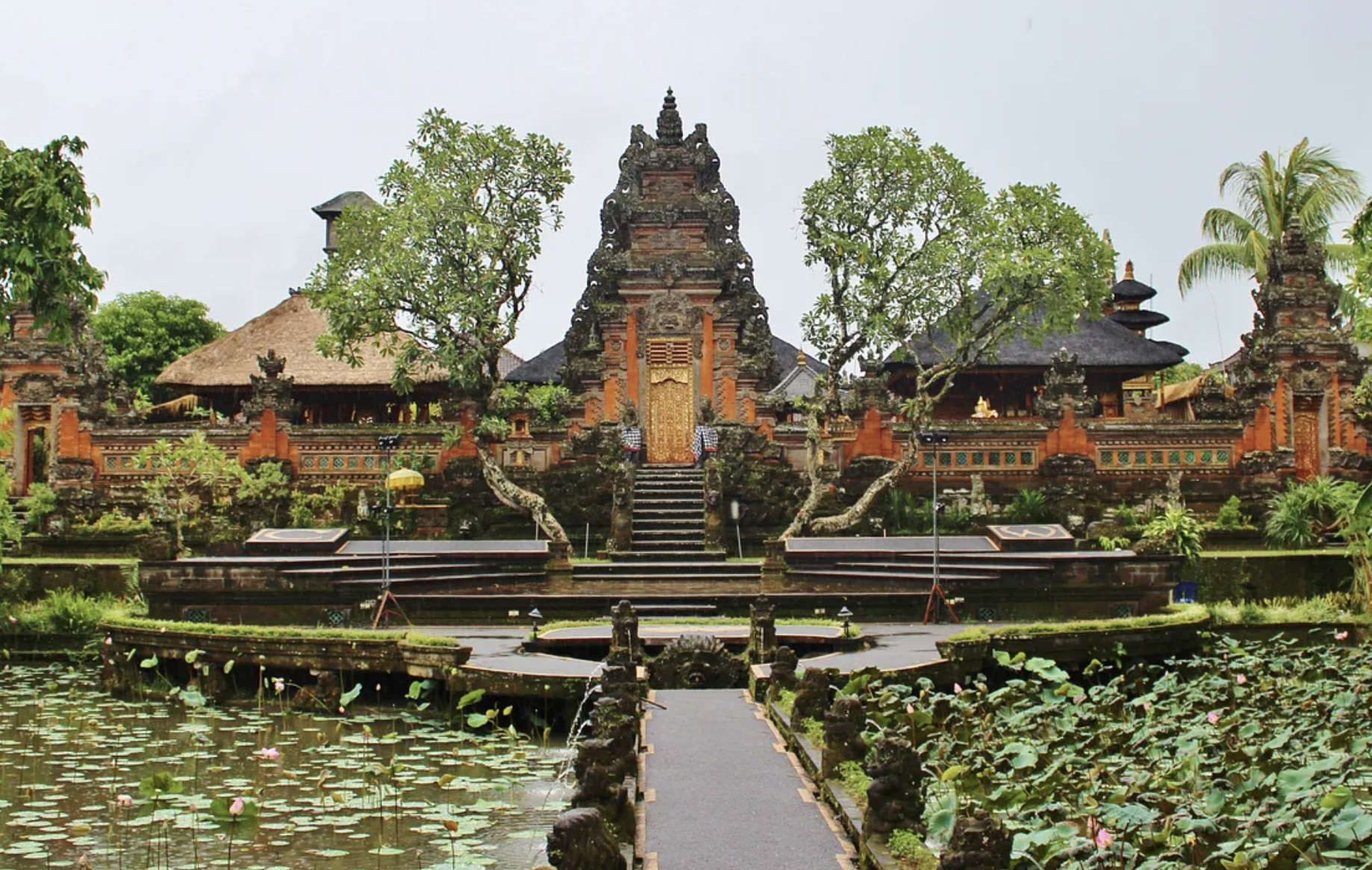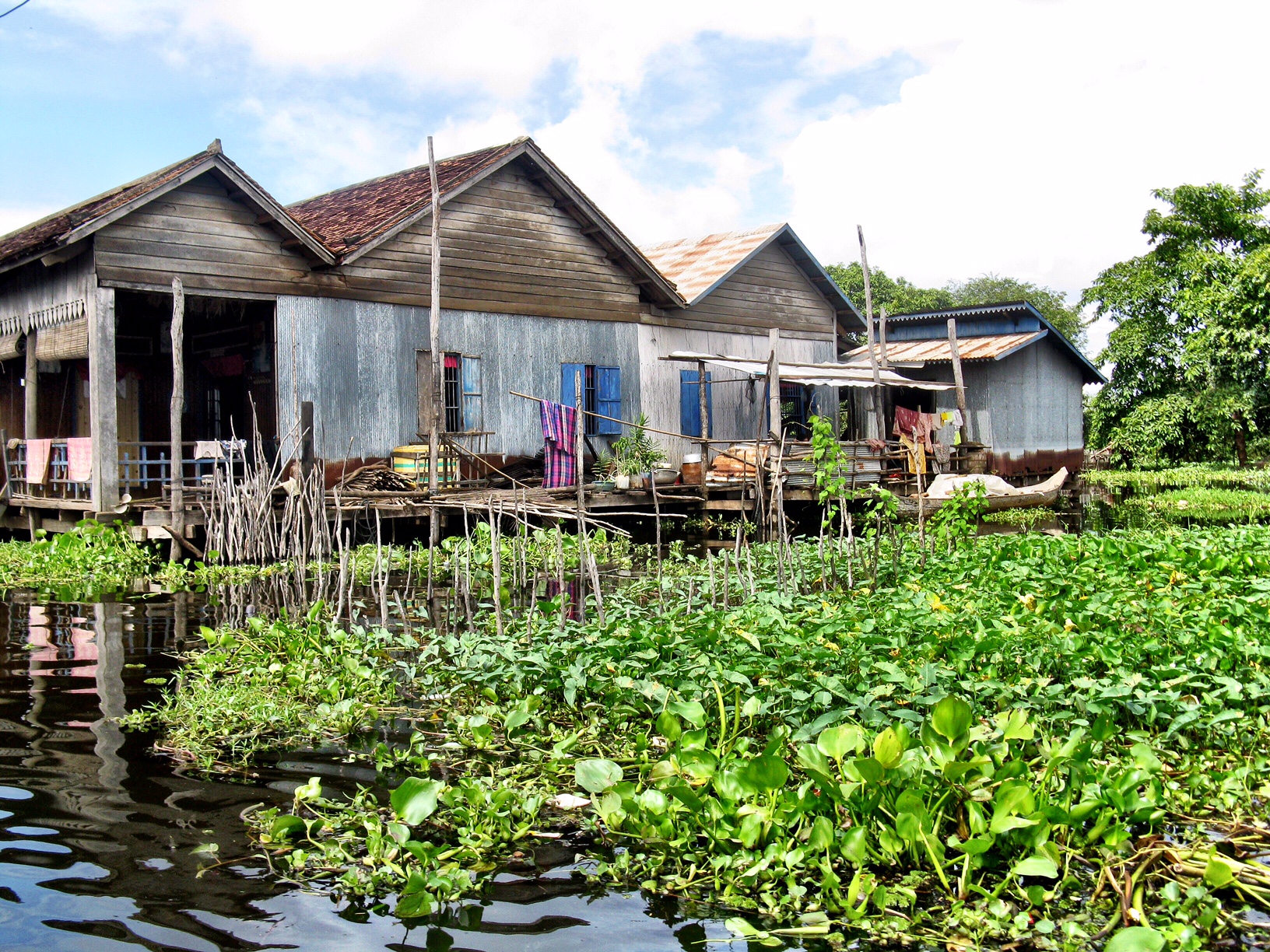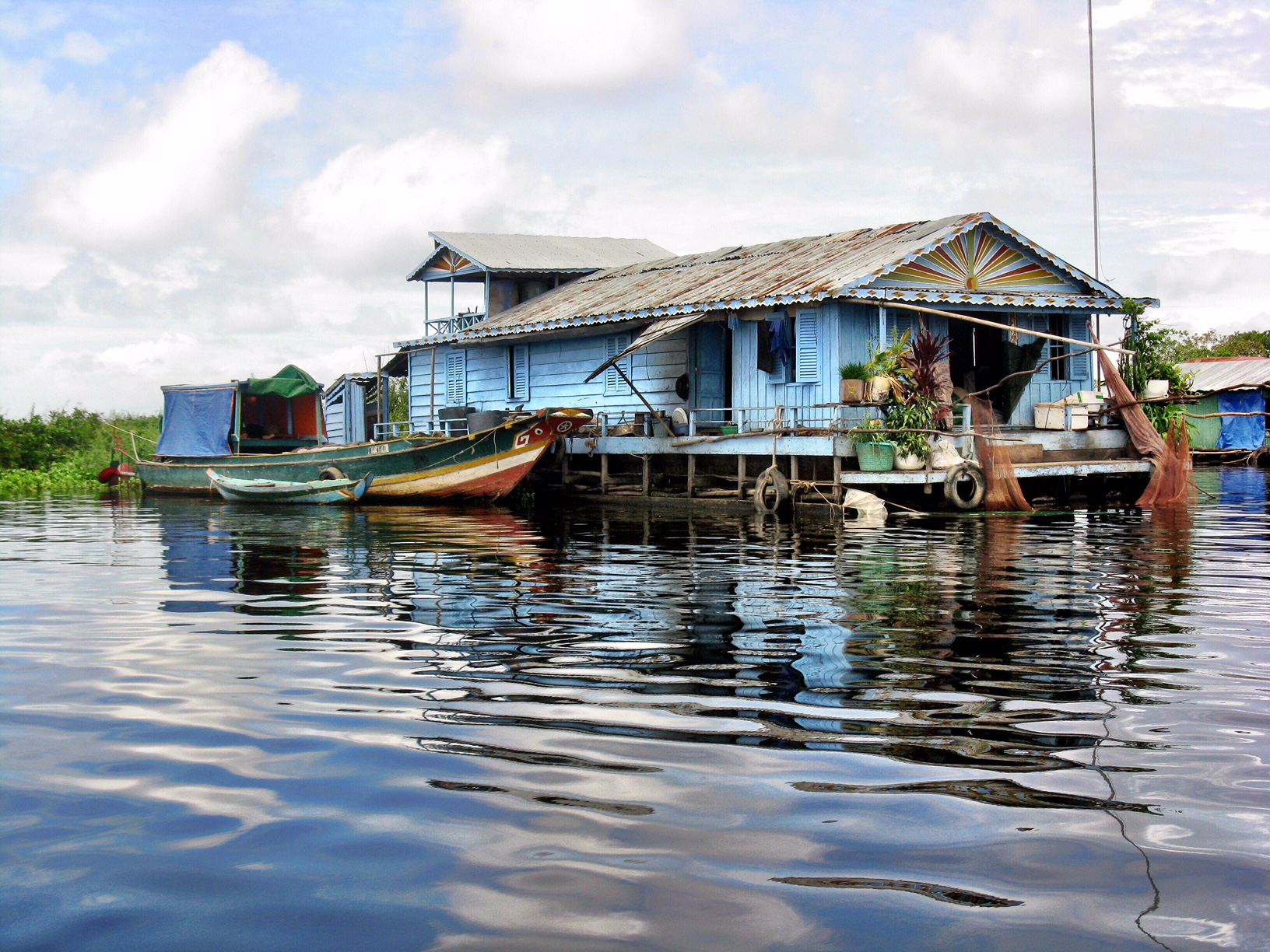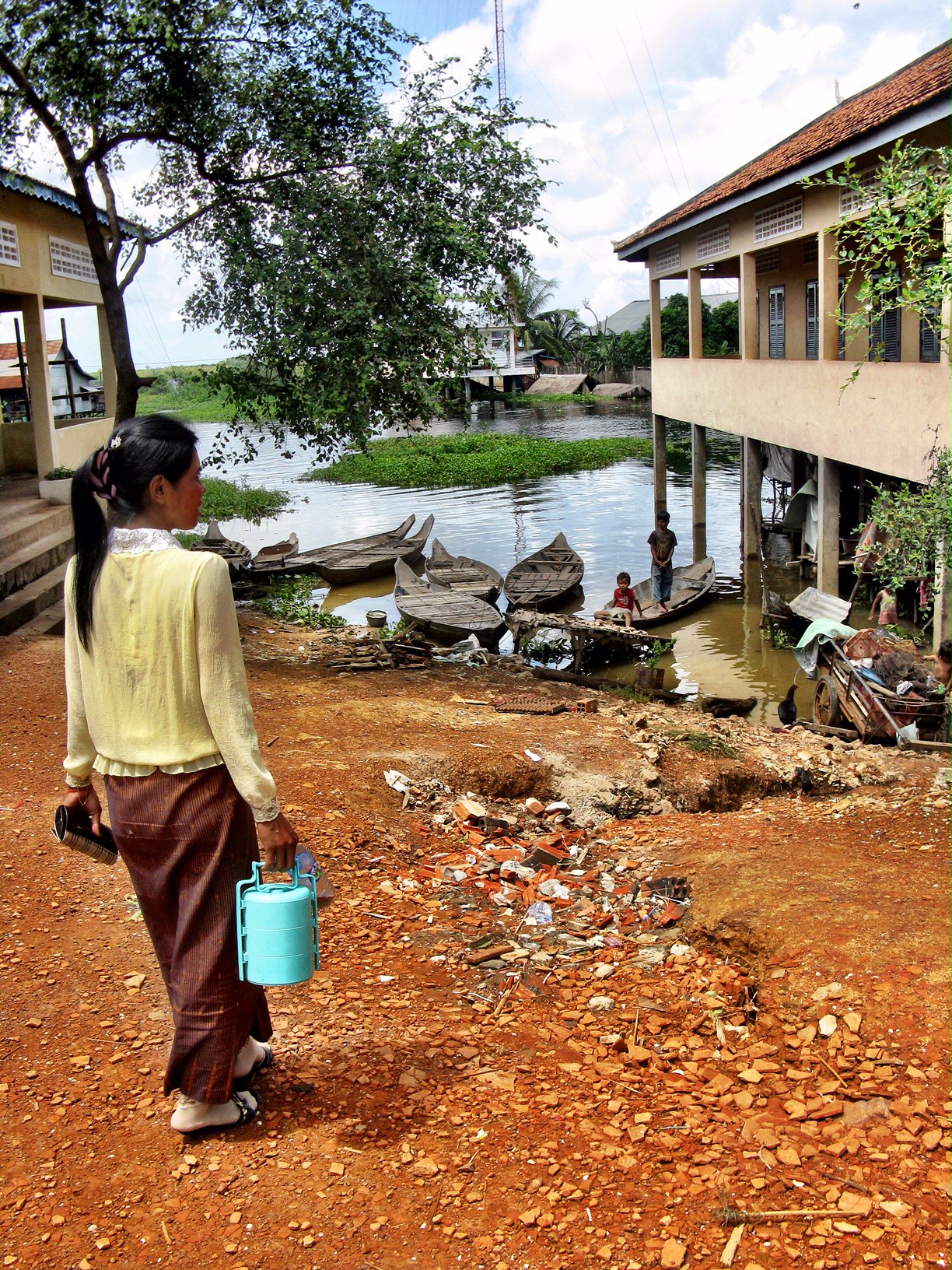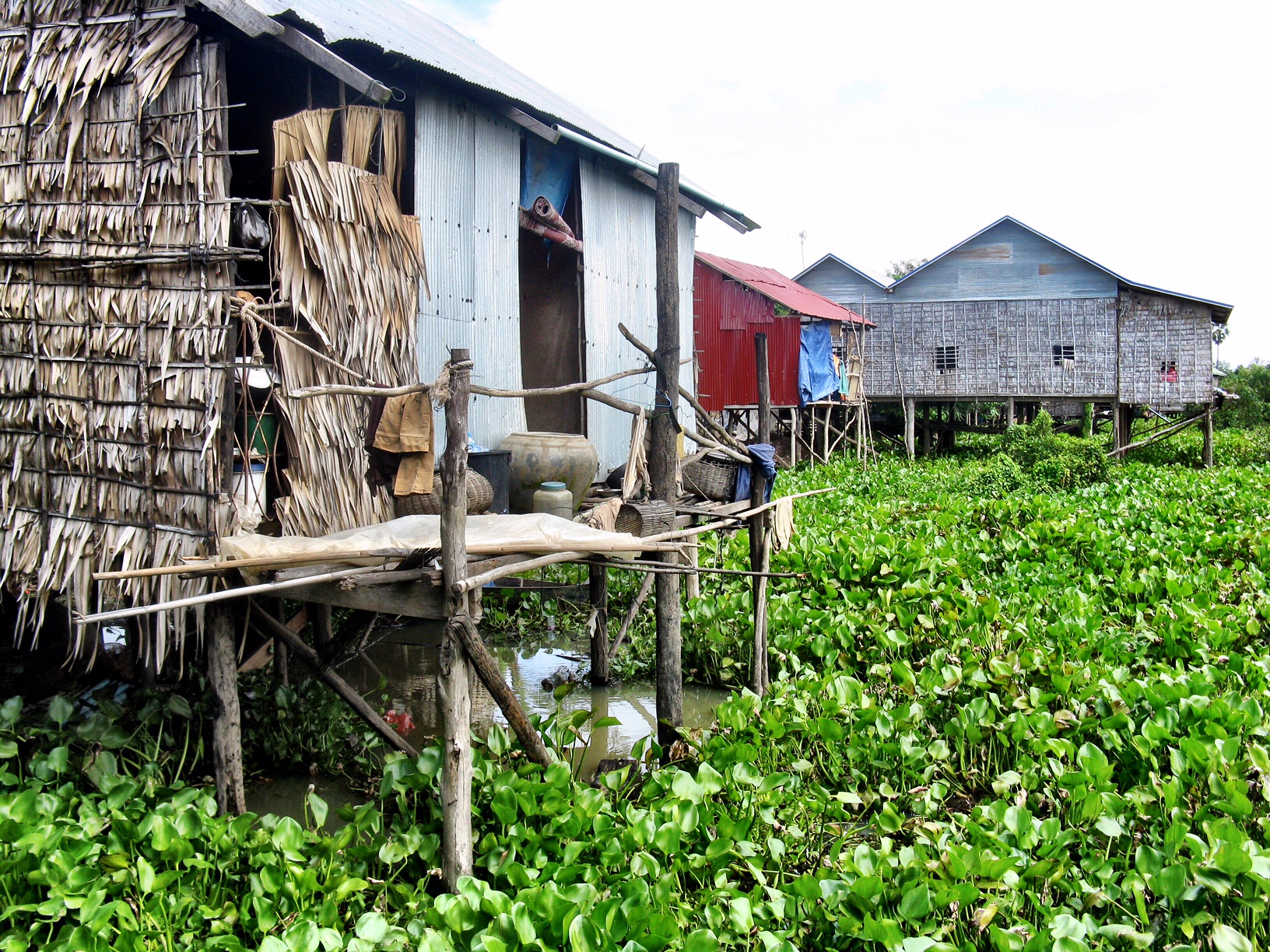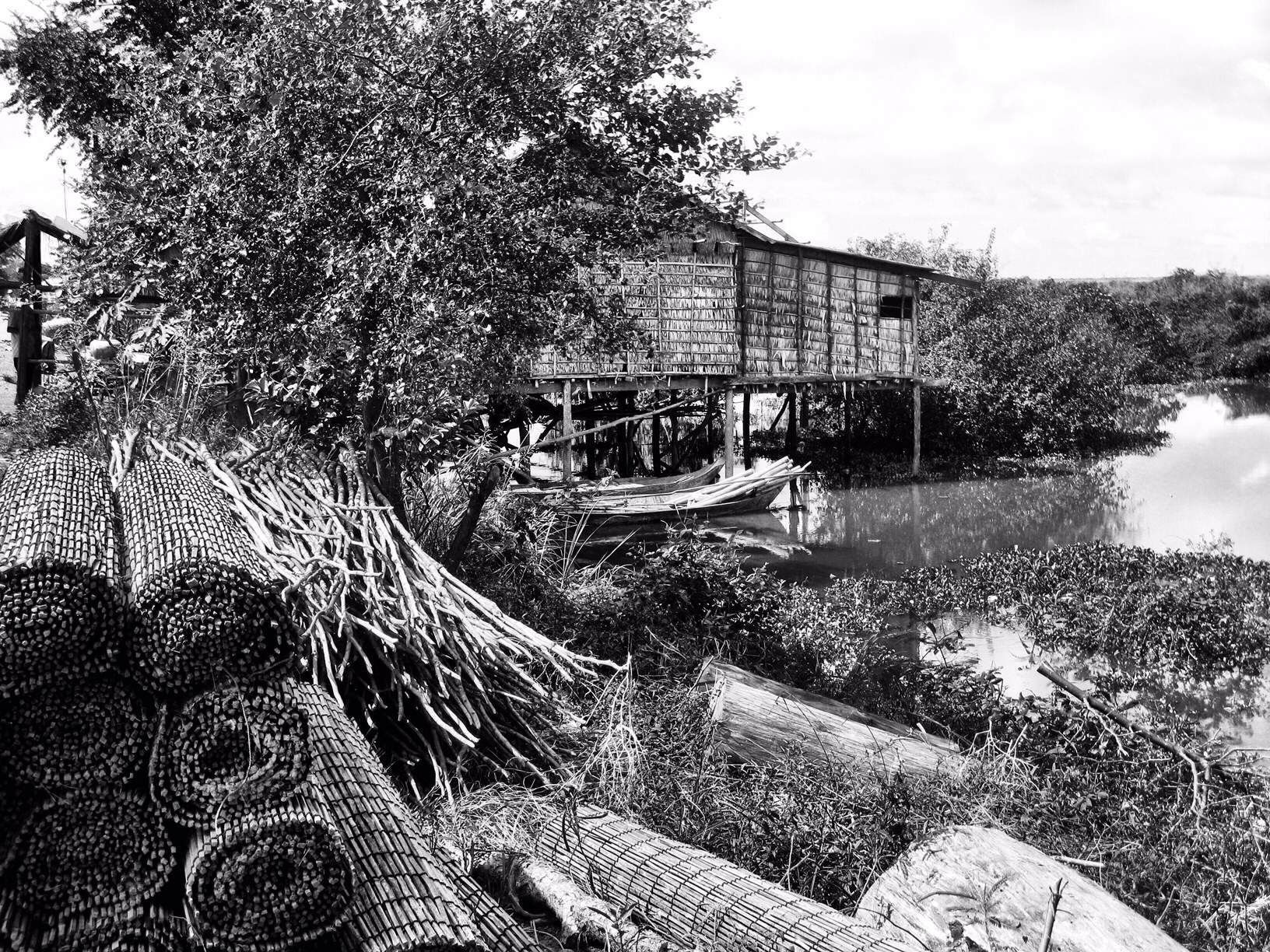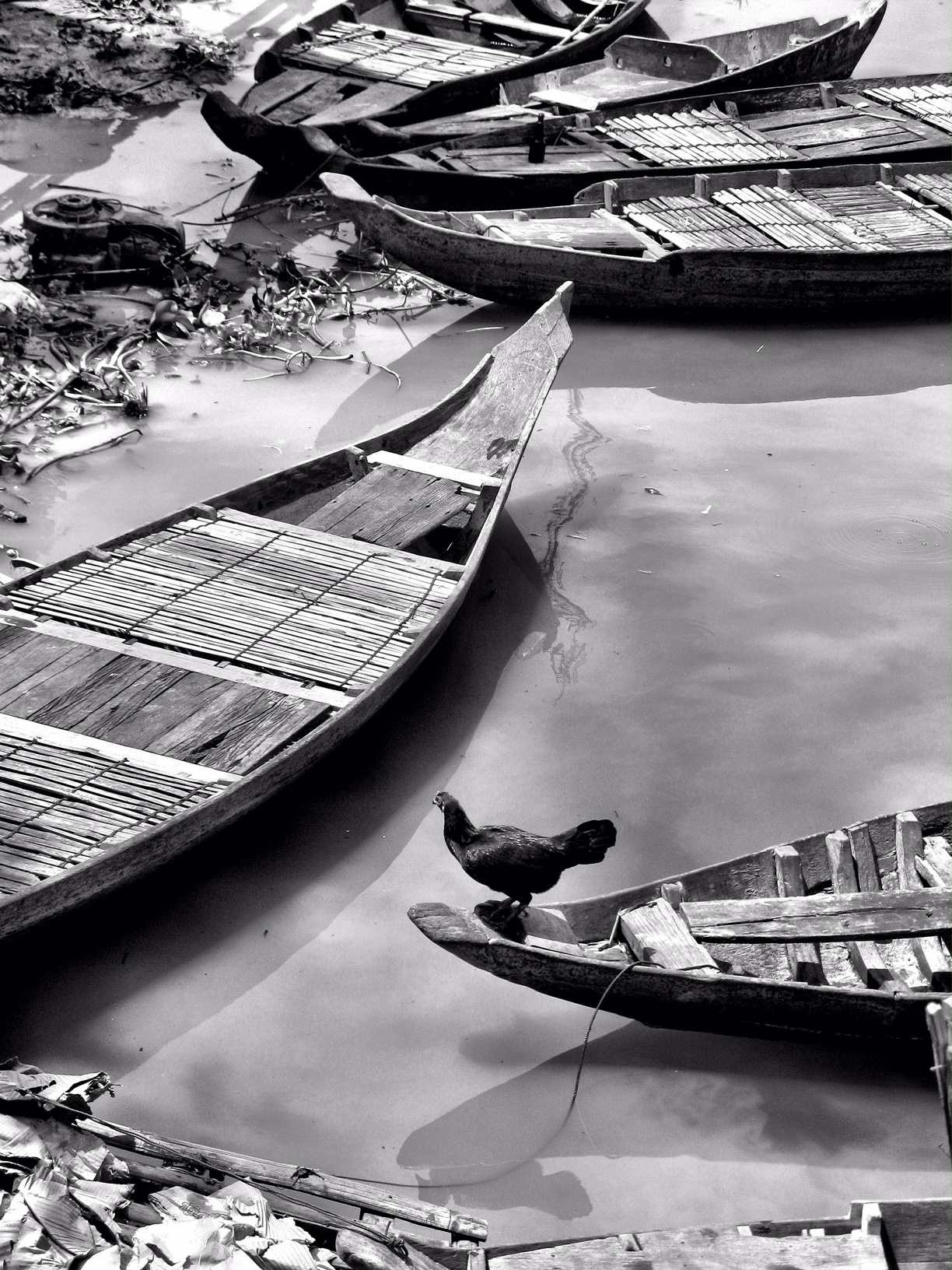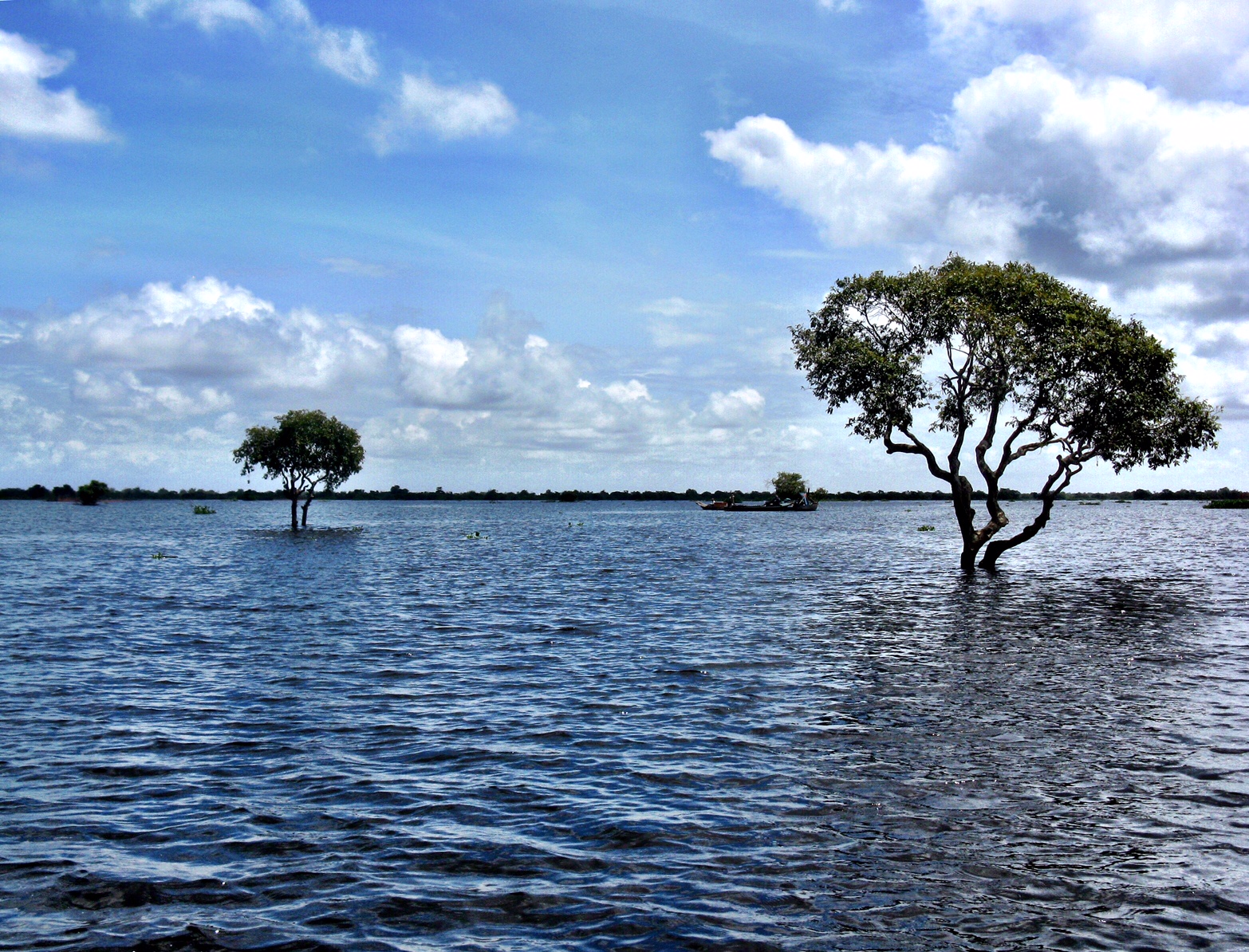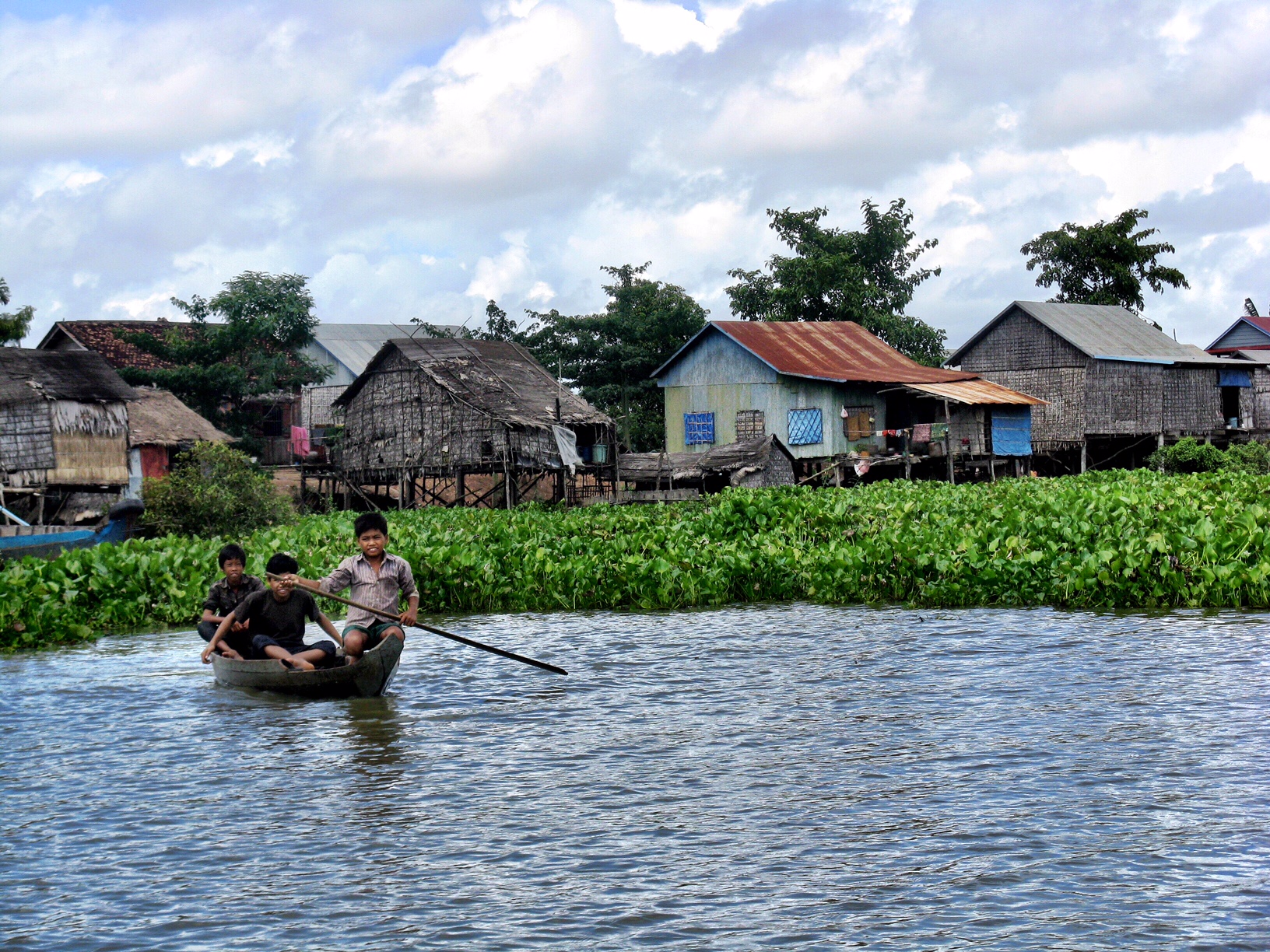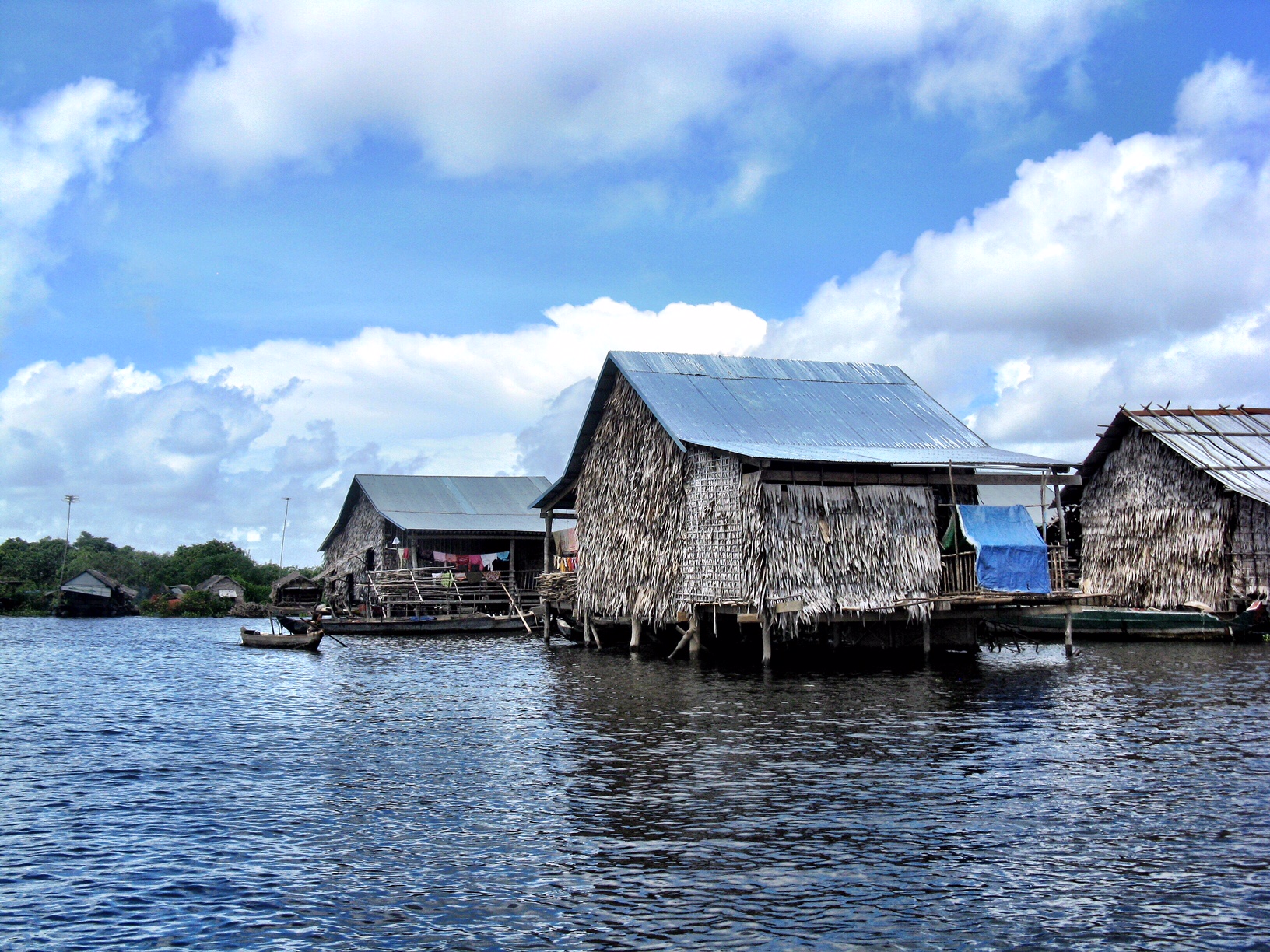Avoid Chong Kneas on Tonlé Sap — it’s not a floating village. All you’ll see are crocodiles, monkeys, snakes and bats being treated cruelly, and you’ll overpay for your ticket and for rice to supposedly feed the local children.
All of the animals at Chong Kneas are treated cruelly, including this monkey on a chain
One of the best parts of living in Asia is that so many great locations are a relatively short flight away (not literally halfway around the world, as the U.S. is). Our friend Brian and his husband, Jeff, recently moved to Suzhou, China and decided to take a trip to Cambodia. They flew into Bangkok, Thailand and took the bus to Siem Reap. Once there, they explored the Angkor Wat temple complex — as well as getting lured into a “floating village” scam.
Here Brian writes about their cautionary tale:
Children are brought in to help scam tourists
Chong Kneas “Floating Village” Rip-Off
There are ads all around for visits to floating villages. The one we went to we were directed to by our tuk-tuk driver, who was our first driver from the airport when we arrived, and we made arrangements for two more days after. Up until that point, he had been a good driver and had shown up when he said he would.
“When I took a picture of the snake, a guy rushed over trying to get us to hold it.
When we said no, the guy taped the snake’s mouth shut with electrical tape.”
We drove for about a half-hour outside Siem Reap and enjoyed the drive, seeing a different part of Cambodia. When we got to the little building near the canal, we were ushered to a ticket counter. The price for the tour was quite expensive at $30 each, but it looked kind of official and we thought that the money would go toward the local community. Plus, we were already there and kind of in the middle of nowhere.
Our tour guide was quite friendly and spoke English pretty well. He claimed to have only learned English from tourists and in the last two years. He also claimed to have grown up in the fishing village.
There’s no floating village — just a row of houseboats in the distance
We traveled along a canal and did not get very close to any of the houseboats that were scattered along the way. Our guide told us about a floating school full of orphans from a big storm that killed about 100 local fishermen. He mentioned a tsunami also. It was kind of confusing. He showed us a video on his phone of children eating rice crowded on a boat.
Our first stop was in the middle of the lake — not really near anything, with not much to look at. Even with the zoom lens on my Nikon, I couldn’t find a decent picture to take. He said we were going to stop for 10 minutes so the boat driver could eat lunch.
The crocodile farm is one of the main attractions at Chong Kneas
Next we went to a little floating shop that also had the crocodile farm (which was just depressing), bats, a monkey and snakes. He tried to get us to buy some dried crocodile that looked like a rawhide dog chew toy for $10. To give a sense of pricing, I had a skirt steak the previous night for $9, and beef here is considered a luxury. We declined. It’s interesting because it’s only $10 and then you can say tried it, so you’re tempted to do it even though you know you’re being ripped off.
Snakes in cages and other atrocities are all you’ll see at Chong Kneas
When I took a picture of the snake, a guy rushed over trying to get us to hold it. But Jeff was like, no way, so the guy started taping the snake’s mouth shut with electrical tape, which just seemed cruel, so we walked away.
A girl bobbing along in a plastic wash basin with a snake around her neck, begging for money for having her photo taken
As soon as we had arrived, a girl less than 10 years old had started rowing toward us in what looked like a plastic wash basin from a nearby houseboat. I thought it looked cute, so I took a picture. I then realized she also had a 3-foot python around her neck. As soon as I took the picture, she began asking for a dollar. I figured she’d earned it, so I pulled out my wallet — but our guide rushed over and said it wasn’t good to give money to her and that her parents make her do it and if we wanted to give money it should be to the school. All of which made the girl whine quite loudly until we left.
Bats in cages round out this scam, which costs $30 per ticket
So then we were brought to another little store, and a guy spoke to Jeff as though from a script about the nutritional value of rice and that a 50-kilo bag for $50 will feed the school for a day. We declined and felt bad in the moment. Our guide, who had been so friendly was standoffish after that for the rest of the boat trip back. Except to ask for a tip and a tip for the driver as we docked.
The entire time, we never got close to anything resembling a village. There were a number of houseboats along the canal, but we didn’t get near them.
We looked them up after the fact and, according to reviews on TripAdvisor, it could have been worse. But thanks to my husband’s experience and intuition, we made it out better than many. As we went past the school, there were maybe 15 kids on it. They were just running around playing. Most likely it was no more than daycare for local kids.
Afterwards, we were meant to go to the national museum, but the events of the boat ride left a bad taste in our mouth, so we had our driver take us back to our hotel. He didn’t try to arrange another day of driving. He must have known we had a bad experience. –Brian
You don’t want to miss the true floating village: Read about Kompong Kleang and see the amazing photos here.

